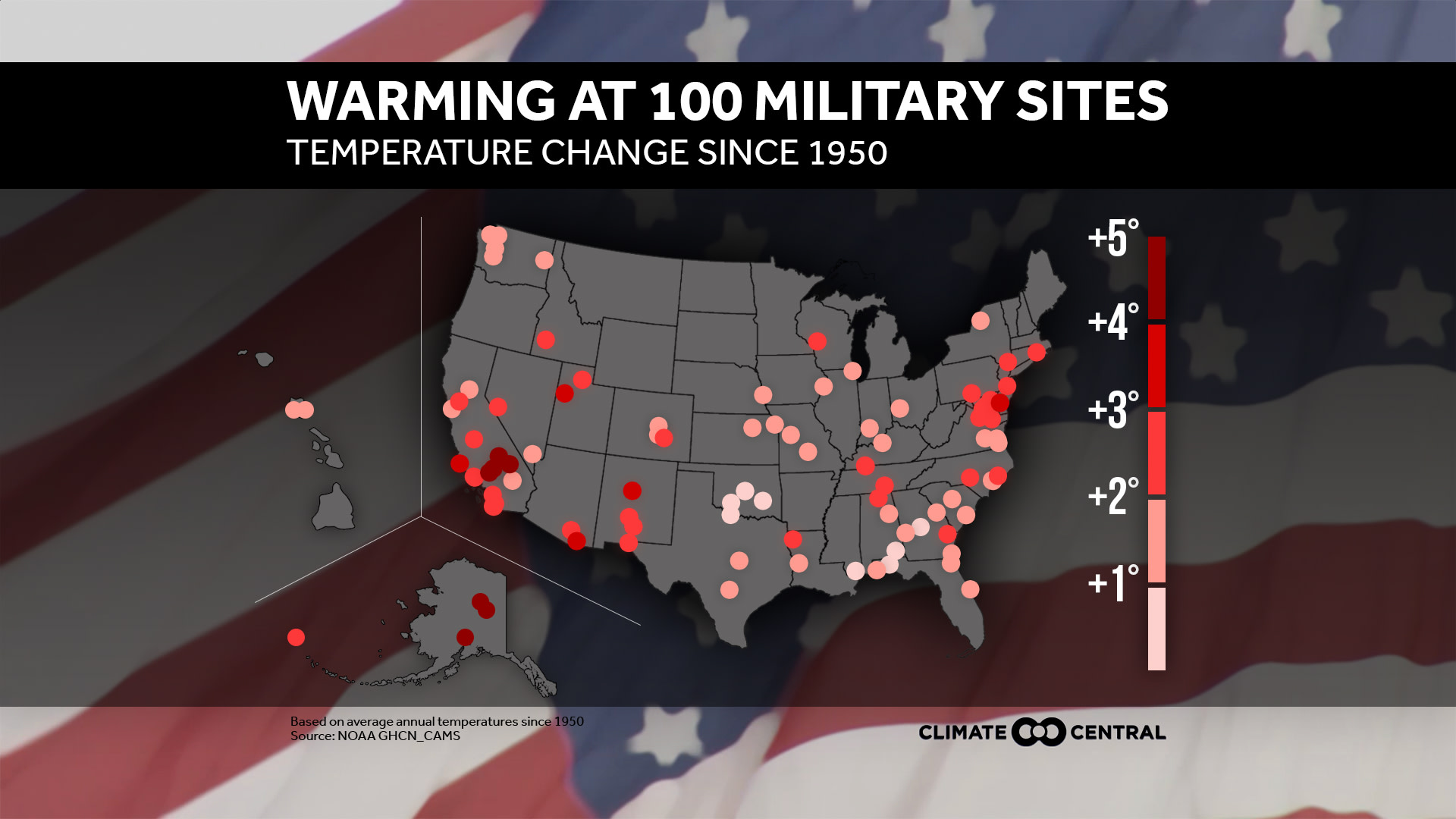In mid-October, Hurricane Michael devastated Tyndall Air Force Base in the Florida panhandle, ripping the roofs from buildings, forcing the base’s evacuation, and causing what the Air Force called “catastrophic damage.” A few weeks earlier, a September wildfire forced the evacuation of the Marine Corps Mountain Warfare Training Center in California. This Veterans Day, it’s worth remembering that the extreme weather that comes with climate change is already affecting the U.S. military here at home.
According to a survey conducted by the Department of Defense between 2013 and 2015, at least one military site in every state has been negatively affected by some type of extreme weather, flooding, or wildfire. The survey indicated that damage has been done to airfield operations, training facilities, and transportation and energy infrastructure. As climate continues to change, these risks will grow even further. Some of the most vulnerable locations are along the coasts, where a sea-level rise of roughly three feet — a conservative estimate of rise by 2100 — is projected to put nearly 130 bases at risk of damage from tidal floods and storm surges.There is also a striking warming trend at these locations across the U.S. — since 1950, all 100 military bases chosen for our analysis are trending warmer. These bases were chosen based on their size, importance, and population. The five locations warming the fastest are all in Alaska and California. Alaskan bases Eielson Air Force Base and Fort Wainwright have both warmed almost 5 degrees since 1950.
Climate change doesn’t just affect the sites where service members live and train. It also is beginning to shape their missions. Reserve forces are called to respond to natural disasters, as they did in Hurricane Harvey in 2017. Looking beyond the domestic borders, the Pentagon’s Quadrennial Defense Review indicated that climate change may act as a threat multiplier — worsening water scarcity and leading to an increase in food costs globally. The political instability and social tensions that follow can enable terrorist activity and other forms of violence in already tense regions like the Middle East where U.S. forces are already deployed.
Methodology: The average temperature trends at U.S. military bases was calculated using the Global Historical Climatology Network version 2 and the Climate Anomaly Monitoring System dataset. Base locations were determined using coordinates in the Department of Defense (DOD) database "Military Installations, Ranges, and Training Areas." A subset of 100 significant bases was made using the 2017 DOD Base Structure Report 2017 PRV (Plant Replacement Value). The PRV was used as the selection criteria based on consultation with experts in the field. Special thanks to the Center for Climate and Security.
